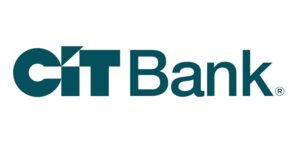
What is the point in putting money in a savings account if you’re going to lose some of that money by trying to get it back?
That is why it is important that you know how to avoid fees on transfers and withdrawals. This will help protect your savings by not having to pay just to access your money.
Editor’s Note: For a no fee savings account, we recommend you learn more about the Discover Bank Online Savings account.
Limits on How You Withdraw Money From a Savings Account
The common misconception is that the money in a savings account should be available whenever you need it, but in reality it’s not that simple. If you were to try and access the funds in your savings account, you should know there are some strings attached.
One major difference between savings accounts and checking accounts is the transaction limit. Your savings account comes under federal Regulation D of the Federal Reserve Board, which limits you to no more than six automated payments or transfers to a third party per month. While this limit does not apply to your ability to take money out if it’s paid directly to you, it does mean you cannot use savings accounts to make routine payments the way you would with a checking account.
To enforce this lit of six transfers out of your savings account, banks will charge you fees for exceeding the limit. Some banks may even charge you additional fees for transfers, even if you’re still within your six transfer limit.
Savings Withdrawal Fees Can Exceed Interest Earned
Knowing how to avoid savings withdrawal fees is important because these fees could easily wipe out the interest your account earns.
Here is a look at three of the largest U.S. financial institutions in terms of deposits shows just how different withdrawal fees can be and how much damage they can do:
| Bank | Excess Withdrawal Fee |
| Chase | $5 |
| Bank of America | $10 |
| Wells Fargo | $15 |
To help visualize how bad withdrawal fees can be, let’s see an example. If you have a relatively small balance in your account, around $10,000, with a 0.03% interest earned annually, you will earn $3 a year. Any of the fees from the banks above will wipe out all of your interest earned plus more. That is why you should be vigilant and try to avoid these fees at all costs.
The Role of Savings in Your Finances
Financial products are tools you use to manage your finances and achieve financial goals. It’s important to understand that each of them is designed for a specific purpose.
For example, savings accounts – unlike checking accounts – are not for making routine payments. The following are some examples of the proper role for savings accounts:
Accumulating long-term savings
While savings accounts limit the number of transfers out you can make, you can put additional money in any time you want. That and the fact that they generally pay higher interest rates than checking accounts make savings accounts a good place to steadily build your savings.
Saving for a specific future expense
A savings account is a good place to start if you plan on making a big purchase in the future. For example, you might want to put a down payment on a house or purchase a car. The accumulated savings and interest will help you reach your goal much faster.
Emergency fund
A common role for a savings account is to be an emergency fund. Although it’s good to plan ahead, you can’t always predict when something will come up. That is why your savings account is here to aid you during those times.
How to Avoid Savings Withdrawal Fees
Using your savings account the right way is one way to avoid savings withdrawal fees. Here are some other tips for avoiding, or at least minimizing, these fees:
Choose a bank with reasonable savings withdrawal fees
As shown in the above table, the three largest U.S. deposit institutions show that withdrawal fees can vary greatly.
Even though your goal should be to avoid these fees altogether by not exceeding the limit of six transfers per month, you should choose a bank that has relatively low withdrawal fees if you think you may occasionally have to go over that limit.
Know your bank’s savings withdrawal rules
The best way to avoid and savings withdrawal fees is to know the rules. Usually, they are buried in the fine print of your account agreement with the bank.
This is important because you don’t want to exceed your limit if you do your banking with a bank that has tighter withdrawal limits than the usual six per month. Additionally, some banks may even charge a fee if you try to close the account altogether.
Budget your monthly needs and plan your withdrawals
Planning ahead can help you avoid dipping into your savings account too much. In the long run, it can also help you develop better spending habits, so you aren’t spending more than you can afford. Budget for a month at a time, so you know how much money you can spend and how much you want to save. This method will not only help you budget your spending, but it will grow your savings over time.
Coordinate your savings and checking accounts
Both savings and checking accounts have specific roles to play. A key is finding the right balance between how much of your money should be in a savings account and how much should be in a checking account.
Consider a CD ladder for planned liquidity
If you have a series of future financial needs coming up, a CD ladder may be another option for making sure you have money ready to meet those needs.
Investing in a series of CDs with maturity dates matched to your upcoming needs can make money available when you need it while boosting the interest you earn in the meantime.
 |
 |
Bottom Line
Excess withdrawal fees are just one of the ways banks can charge you for a savings account. Normally when people are looking for a savings account, people tend to focus on the interest rate the bank pays. For more posts like this, check out our lists of bank guides and credit card bonuses!




Leave a Reply